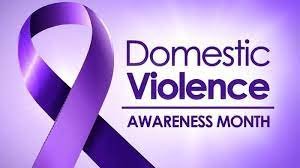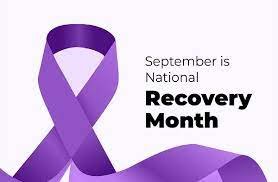When a professor dies, it’s like an entire library burned to the ground. African Proverb
By Mark Sanders, LCSW, CADC
I was accepted as an MSW student at Loyola University of Chicago, School of Social Work, in the fall of 1983, and I graduated in January 1986. I have authored five books since graduating and have contributed writings to New York Times Bestselling Books. In addition, I have had an award winning career (four lifetime achievement awards) as a social work generalist and specialist in culturally responsive practice with African Americans. This museum, which I founded, is the 2023 winner of the Faces and Voices of Recovery, Innovations in Recovery Award.
My social work professors at Loyola laid the foundation of much of what I have accomplished, and this post is a tribute to them. Five of the six are no longer living. I'd like to think they are practicing social work in heaven.
Margaret Dahl, Ph.D (1949-1993)
Professor Dahl was my academic advisor and instructor for an elective course, Social Work Practice with Women. The first day she told the class she was a feminist. “Which means,” she explained, “I'm pro woman but not anti-male. With my new understanding of professor Dahl's definition of feminism, I went home and told my wife I was a feminist. “No,” she countered, “you are not a feminist.” Although close examination does reveal that I have benefited from male privilege and still have work to do in the area of sexism, I have tried to live up to what I learned from Dr. Dahl. I authored a workbook entitled, Counseling African American Women with Substance Use Disorders. This would not have been possible without Dr. Dahl's influence. The last five years that I was in clinical practice, I counseled adolescent girls and emerging adult women. Dr. Dahl was present with me in spirit during each session.
The greatest gift I ever received from Dr. Dahl was a comment that she wrote on my term paper, along with the grade of A: “This paper is good enough to be a journal article.” The next semester I took another elective course with Professor Dahl with the goal of getting the term paper ready for journal submission and publication. While it was never published, periodically during my three-decade college teaching career, I have written on students’ term papers, “This paper is good enough to be a journal article.”
Joseph Lassner, Ph.D (1926-2016)
Joseph Lassner taught group work practice at Loyola. I have led groups for 38 years, and Professor Lassner's teaching has had the greatest impact by far on my social work clinical practice. Post graduation he recommended me to lead a monthly support group with exchange students from all seven continents, and I was able to hire professor Lassner to teach me how to supervise staff who led groups at the agency where I was employed. When the consultation ended, his final words to me, which I will never forget, were, “No one cares how much you know unless they know how much you care.”
A few years ago, I tried to locate Dr. Lassner to let him know I appreciated how much he taught me. I learned that he had died a few years earlier. His obituary indicated that he had a son who was College President at the University of Hawaii. I was able to convey my gratitude to his son with these words: “Your father had a profound impact on my life and work. For three decades I taught Group Therapy at universities and throughout the world, exactly the way your father taught me as a graduate student in 1984. Hundreds of clients have benefited from what your father taught me.
Joseph Walsh, Ph.D (1945-2016)
There were students in my social work class classes who got better grades than I did. My excuse is that, while my classmates were paying attention to what our professors were saying, I was paying attention to how they said it. I instinctively knew I would be a college educator one day. Dr. Joseph Walsh was a perfect role model. He wore the best suits to class each day, as if we were important. He was extremely organized and taught from a notebook placed upon a lectern. He wore a large wedding band. When I became a college educator, I imitated all of that, including the large wedding ring. Dr. Walsh introduced me to mental health in his classes. This played a major role in my becoming a co-occurring disorders specialist.
Dr. Walsh doubled as the academic advisor for my second year internship. My field instructor was thinking of failing me and told Dr. Walsh I was too quiet, that I didn't talk enough and wasn't learning anything. When the three of us met, Dr. Walsh asked me what I was learning. I trusted him. I talked for a half hour. My field instructor was surprised at how much I was learning.
The greatest honor Dr. Walsh gave me was inviting me twice to be a part of the committee he was chairing to select the Illinois Chapter of NASW Social Worker of the Year.
Professor Barbara Bacon, MSW (1934-2020)
Professor Bacon was my only African American professor in grad school. She clearly cared about me as a human being and helped guide my success throughout grad school. It was obvious by the way she carried herself that she was proud to be African American. That was great role modeling. She advocated for African American students and connected us with alumni and successful African American leaders and social workers. One of her areas of specialization was issues of diversity in social work. Her bold teaching helped pave the way for me to focus on culturally responsive services for African American clients.
When Professor Bacon became Assistant Dean of the School of Social Work, she asked me to lead the social work graduates in reciting the social work code of ethics during their commencement ceremony. Years ago, as a Loyola University of Chicago, School of Social Work, alumnus, I was honored to receive The Barbara Bacon Award for contributions to the social work profession. I have spent my career as a college educator trying to advocate for students the way Assistant Dean Bacon advocated for me and my classmates.
Gloria Cunningham, Ph.D
In graduate school Dr. Cunningham taught Occupational Social Work (Employee Assistance Counseling). I was already a certified addictions counselor; it was a natural fit for me to take all of the occupational social work classes. Back then, most employee assistance programs (EAP) focused on helping alcoholic employees.
Dr. Cunningham was also faculty liaison for my first year internship. While many of my classmates had the economic resources to attend school full-time without working, I had to work full-time while going to school full-time. On top of that, I was engaged to be married. I slept four hours per night when I was in grad school. I traveled by bus and train to work, to school, and to my field placement. I was exhausted. Concerned that I was behind in turning in my process recordings (word-for-word session notes), my first year field instructor scheduled a meeting alone with Dr. Cunningham to express her concern about my poor performance.
Professor Cunningham protected me. When I met with my field instructor for supervision, she put her head down and, in a low voice, said to me, “Gloria Cunningham told me to leave you alone.” While we never talked about this, I knew my professor was aware of my multiple roles and that I was doing the best I could do.
My most memorable moment with Dr. Cunningham was my third year as a college educator post MSW. I wondered why some of my colleagues at the university where I taught at the time were so mean spirited? Dr. Cunningham invited me to lunch at a Thai restaurant on State Street to discuss this. She drew a picture of a Poppy field on the restaurant napkin, then shared with me the following story.
In Australia, the poppy plants can grow four or five feet tall. There is a man who sits in the poppy fields with a machete, and whenever one is outgrowing the rest, he uses the machete to cut off the top of the taller one to make sure they all stay the same height.
Dr. Cunningham went on to explain to me that academia can be quite competitive. She encouraged me to find a network of supportive academics. I did just that, and it contributed greatly to my longevity as a college educator.
Thomas Meenaghan, Ph.D
Dr. Meenaghan is my only living graduate school professor. He was the most unique. He had an east coast accent and he taught without notes. That's how well he knew his subject. Just as I did with Professor Walsh, I studied how professor Meenaghan taught. He had a sense of humor in and out of the classroom and often engaged in banter in the hallways. He was fun, yet, so smart. He once gave the class an option to take a written exam in class or have an intelligent conversation with him one-on-one about the classroom content as the final exam. That was different. I jumped at the latter offer.
Professor Meenaghan's doctorate degree was in sociology, which meant that he thought different from the rest. His area of specialization was social policy. He made statements in class which impacted me my entire career. Here are two examples.
Sometimes you social workers can be a part of the problem. While you're sitting behind desks meeting individually with clients, there are systems out there oppressing your clients. You need to deal with those systems.
You cannot be at your best as a social worker unless you're willing to get yourself fired. That means you have to advocate for clients who may struggle to advocate for themselves – and you might get fired.
I have spent nearly four decades as a social worker and college educator advocating for clients and challenging students the way professor Meenaghan challenged me and my classmates. The greatest gift I received from Professor Meenaghan was the opportunity to return to my alma mater to teach when he was Dean of The School of Social Work.
Novelist Terry Pratchett said, “No one is actually dead until the ripples they caused in the world die away.” My professors will live forever.




















